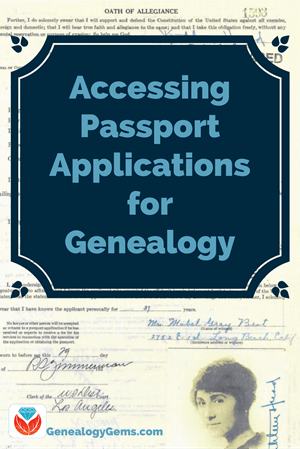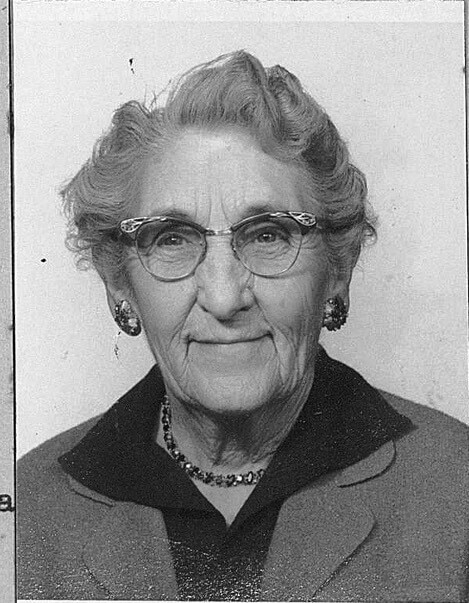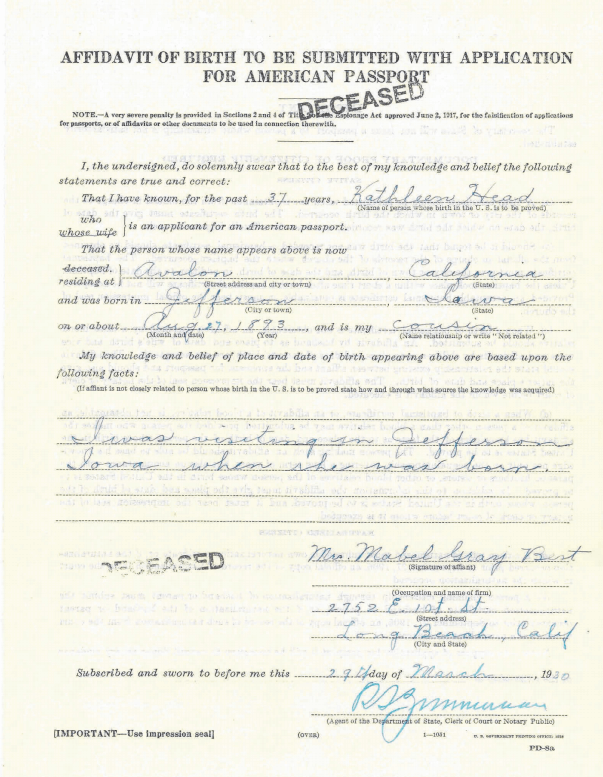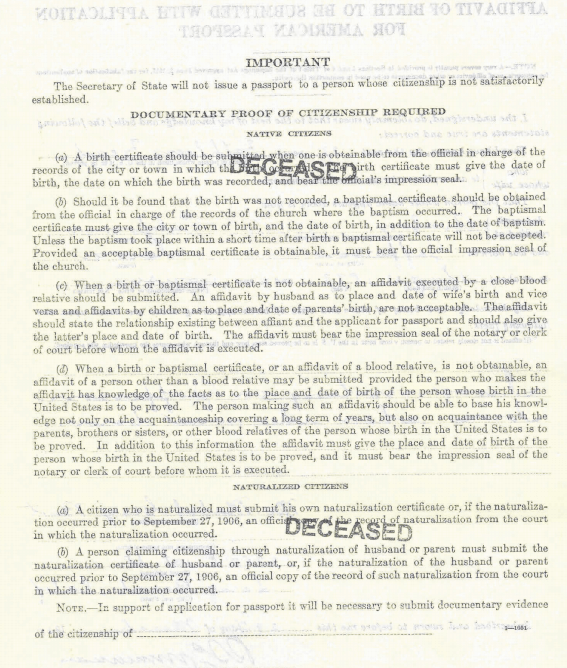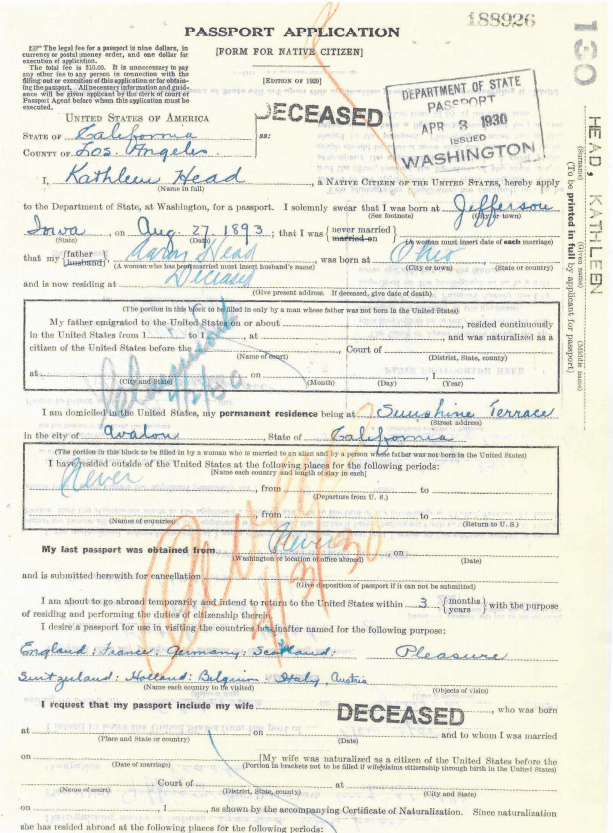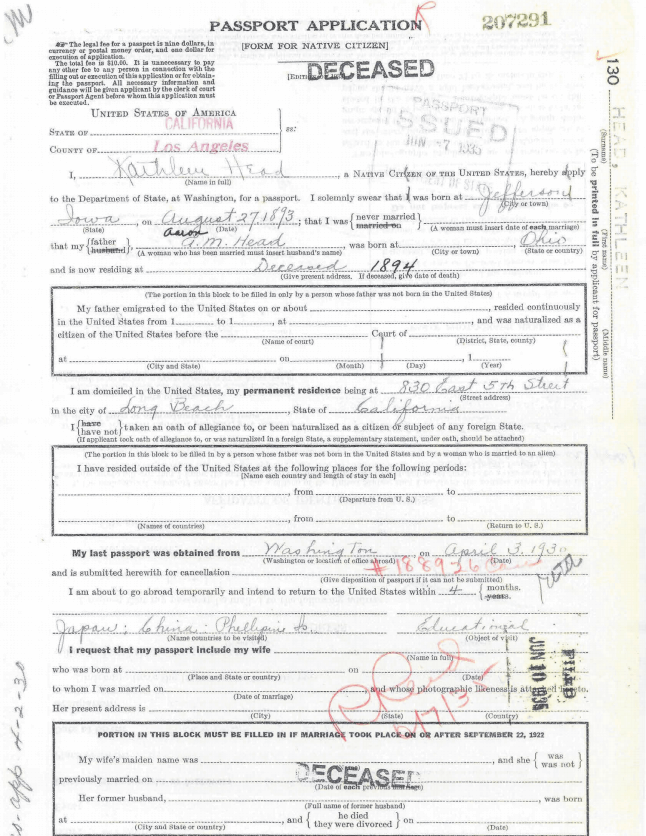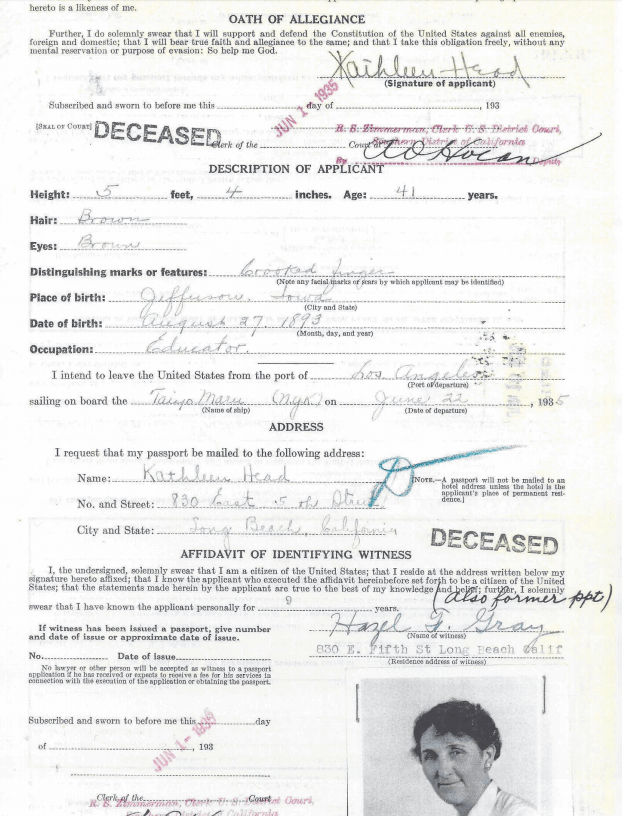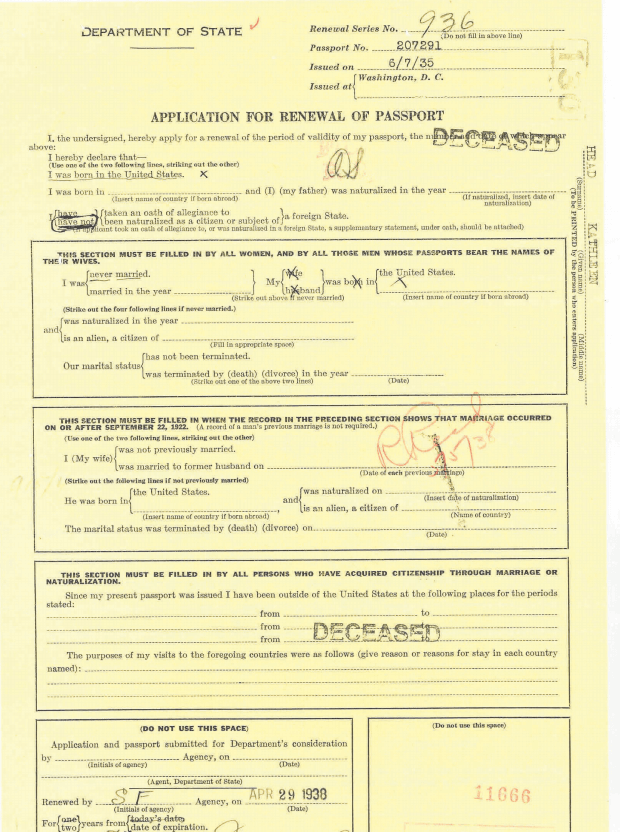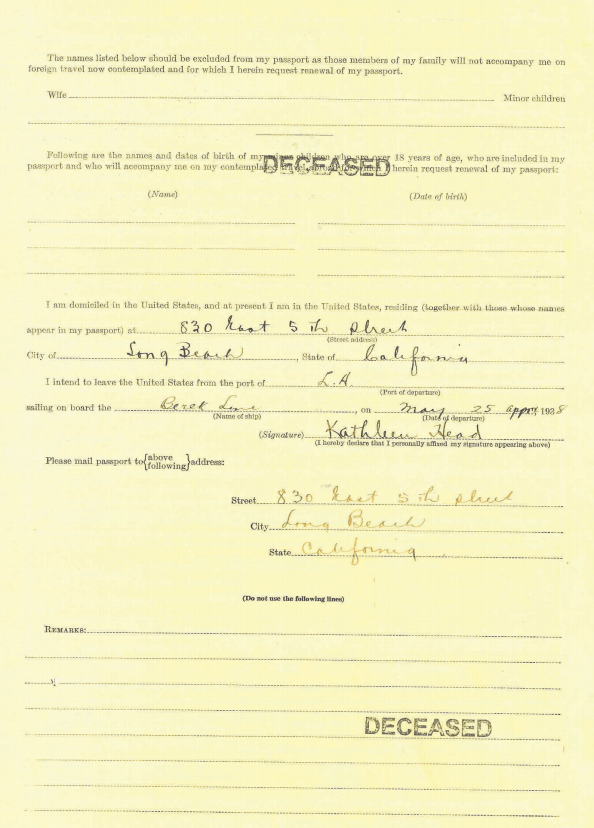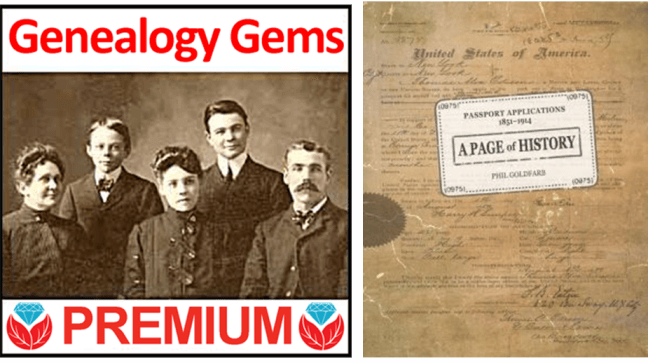by Lisa Cooke | Apr 2, 2018 | 01 What's New, Adoption, Listeners & Readers, Records & databases, Research Stories
Using passport applications in genealogy can lead to family history discoveries! See how this intrepid researcher tracked down passport applications that weren’t online. And then see what he learned about the life of a birth mother after she gave up her child in the 1920s.
A longtime Genealogy Gems Podcast listener named Tom wrote in a while back, asking about finding U.S. passport applications for the 1930s. He was trying to learn more about the life of his wife’s biological grandmother. What happened after she surrendered her child? Tom could tell from other sources that she traveled the world. But big databases of passport applications online only go through 1925. He wanted to find any passport applications she filed in later years.
We directed him to the US State Department webpage for ordering copies of passport records issued after 1925, for which you need to do a Freedom of Information Act (FOIA) request. Tom recently reported back to us with the full story….
Using passport applications for genealogy: Finally—success!
“Finally got copies of the passport application request I made to the Department of State in April of 2016. Took all this time plus a nudge from my Congressional office to make it happen!
My wife’s mother, Bonnie Jean Head, was adopted into the Frank Mathews family in 1927 when Bonnie was about 19 months old. We have the court adoption papers from the White Pine County Superior Court issued in 1927. The court documents included an affidavit signed by Kathleen Head affirming she was the biological mother and that she relinquishes any and all parental rights to Bonnie Jean. And that the father was unknown.
Doing an Ancestry.com search on Kathleen Head resulted in many documents including ship manifests that seem to show Kathleen (who never married) and her roommate (who never married) were crew members on a number of ocean liners in the early 1930s. They also traveled together to South America and we found their passport photos [from before the 1930s] on Ancestry.com.
I sent a FOIA request to the Dept of State for copies of their original passport applications according to the State Department’s on-line instructions (I had their passport numbers from [earlier applications]). That was in April 2016. Hearing nothing by September-ish 2016, I stopped into my Congressional Representative’s local office and asked them if they may have a better contact source than was posted on the website. They, in turn, sent an official Congressional inquiry to the State Department, which resulted in a contact from them and a note saying they had boxes of applications to search, which might take up to six weeks.
Twelve months later, October 2017, I got the copies of Kathleen Head’s passport applications. The records were very informative and included physical, mental and family information as well as a current photo. She was a single, white woman about 41 years old traveling from Yokohama, Japan to the US on a Japanese-flagged ocean liner in 1935. (Brave or very lucky woman at that time just before Japan’s invasion of China and start of WWII.) She died at age 83 in Long Beach, CA. She and her roommate of forty plus years were school teachers in the Long Beach area.”
I admire Tom’s tenacity! It’s a good reminder that a lack of response doesn’t necessarily mean “no”, and it also doesn’t mean there isn’t another avenue that can be taken. It’s brilliant that he turned to his Congressional office for help. It’s a strategy the rest of us can keep in mind when making difficult Freedom of Information Act (FOIA) requests. (Click here to learn more about the FOIA.)
Click through the images below to take a closer look at the copy of Kathleen’s passport applications and renewal from the State Department, which Tom kindly sent in. These documents are bursting with valuable genealogical information. They even include an affidavit attesting to Kathleen’s birth information, signed by a cousin, who provided her own name and address. The passport applications themselves, along with the other documents themselves, sketch a story of her lifelong companionship and work that took her around the world during the years before World War II. Many thanks to Tom for allowing us to share your story.
2) Documentary Proof of Citizenship
3) Passport Application 1930
7) Application for Renewal of Passport 1938
8) Application for Renewal of Passport p. 2
Disclosure: This article contains affiliate links and Genealogy Gems will be compensated if you make a purchase after clicking on these links (at no additional cost to you). Thank you for supporting Genealogy Gems!
by Lisa Cooke | Jul 9, 2016 | 01 What's New, Records & databases, Research Skills |

Records that have been created recently are difficult to find and access. Some privacy laws protect, and hinder, our being able to find more recent birth, marriage, and death records we need. Here are some tips for finding these and other genealogy records not yet online.
Recently, Tom in Olympia, Washington wrote us with a question about how to find recent genealogy records that are not online yet.
“My wife’s mother was adopted in 1925. We have found her biological mother’s name and through Ancestry.com, I’ve found several bits of information about her from census records. She also was a crew member on three steamships in the 1930s. On two of the ship manifests, her U.S. passport numbers are listed. Do you know any search options for finding information from passports in the 1930s?”
Maybe you have had a similar question. We hope our answer helps everyone more easily find genealogical records that are not online yet.
Obtaining Recent Passport Application Records
Tom will be interested in obtaining a passport application record which may hold more information about his targeted ancestor. As Tom already discovered, U.S. passport records are online at Ancestry and FamilySearch, but only those records prior to 1925.
My original hope was that the National Archives Records Administration would have had the passport application records for the 1930s. I googled passport applications National Archives, and the first search result took me to an excellent article. I learned the U.S. State Department has passport applications on microfilm between the years and dates of 1795 to 1905 and January 2, 1906 – March 31, 1925. Sadly, these were not the years Tom was looking for.
To find information about passport applications in the 1930s, I needed to go another route. I opened a new window and googled U.S. State Department passport applications request copy. The first search result took me right to the page I needed. The Passport Services maintain the U.S. passport records from 1925 to the present. These records are protected by the Privacy Act of 1974.
Passport records in this time frame for a third-party person are processed under the Freedom of Information Act. These records need to ordered by mail. Tom can make a request in writing and send that request to:
U.S. Department of State
Office of Law Enforcement Liaison
FOIA Officer
44132 Mercure Cir
P.O. Box 1227
Sterling, VA 20166
I suggested he mention his desire for the information is for genealogical purposes and what his relationship is to the person in question.
Using the Same Strategy for Other Recent Genealogy Records
Remember, this same kind of strategy applies to other genealogical records you might be looking for that were created recently. You can use Google searches and follow-up phone to find out where more recent records are and the access policies.
As an example, a recent Indiana marriage license index can be searched and viewed online for free at the Public Access records website for the state. I found this little goody by googling Indiana marriage records.
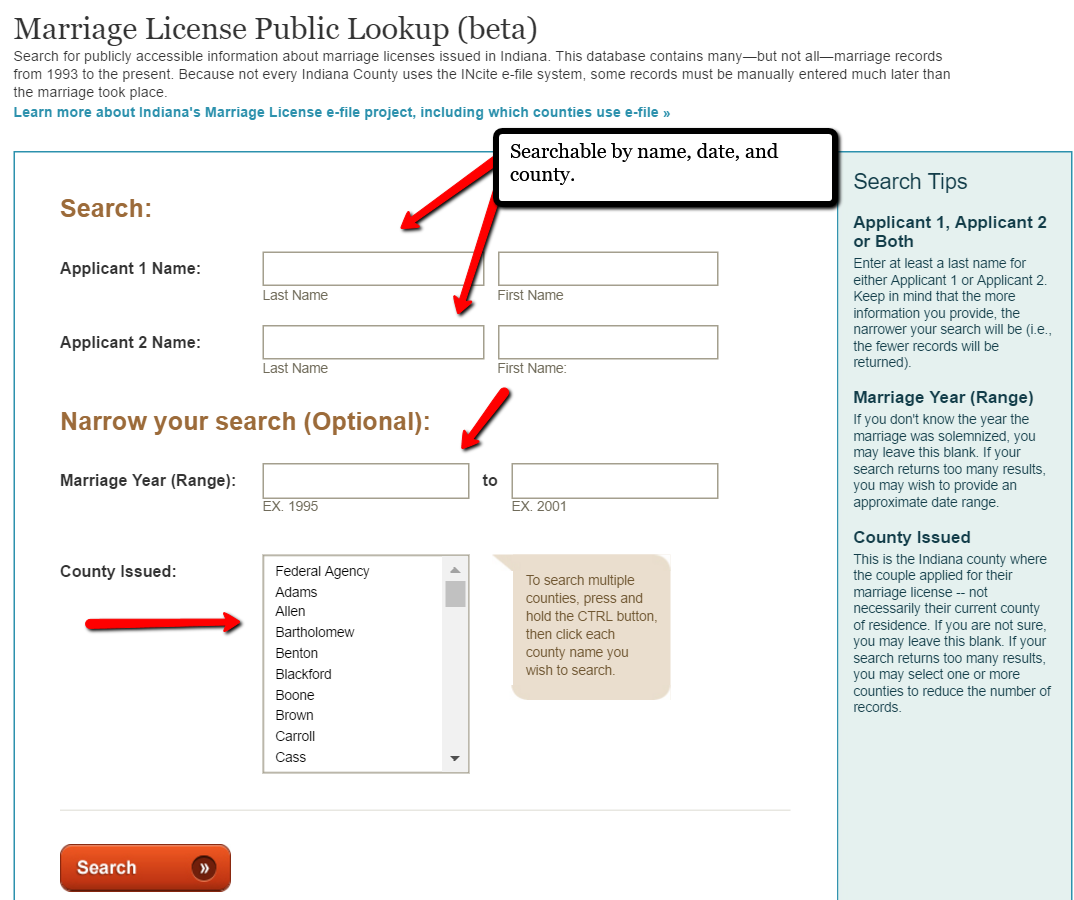
All of us at Genealogy Gems adore having the opportunity to find and share solutions like this one for overcoming the problem of locating recent genealogy records that aren’t online. If you haven’t done so already, sign-up for our weekly newsletter for more tips and tricks. Oh, and write to us anytime with your genealogy questions! We love to hear from you!
More Gems on Recent Genealogy Records

Other recent genealogy records in the U.S. are also available via the provisions of the Freedom of Information Act (FOIA). Click here to read about them! They include post-World War II draft registrations, immigration and naturalization documents and Social Security applications (SS-5).
by Lisa Cooke | Jul 4, 2016 | 01 What's New, History, Holidays, Immigration, Research Skills, United States
 Happy July 4th–and Happy 50th to the Freedom of Information Act! Read more about the FOIA and genealogy records we can access because of it.
Happy July 4th–and Happy 50th to the Freedom of Information Act! Read more about the FOIA and genealogy records we can access because of it.
Today we in the United States celebrate our Independence Day with grateful hearts and parades. Well, genealogists with U.S. ancestors have an extra reason for fireworks: today marks 50 years since Congresss signed the Freedom of Information Act into law, and the U.S. became one of the first nations to open its records to the public.
The Freedom of Information Act
The FOIA opens certain kinds of information about the federal government and certain information created by the federal government. It doesn’t apply to everything, including documents that relate to national security, privacy and trade secrets. The FOIA also only applies to documents created by the federal government, not state or local governments.
Since it was passed, the FOIA has continued to be expanded and amended. Over the years, the numbers of FOIA document requests has skyrocketed, too. In the first five years after the FOIA passed, it only resulted in about 500 total requests for information–that’s an average of just 100 per year. Last year alone, there were more than 700,000 requests!
The FOIA and Genealogy
So, of course we have to ask the question: how well do FOIA and genealogy go together? As it turns out, quite well. My favorite FOIA request is for an ancestor’s Social Security application (the SS-5 form). This is the form that generated the assignment of a relative’s Social Security number and was the first step to receiving any Social Security benefits. It’s what the very limited information on the Social Security Death Index comes from, as well as the much-richer (but not comprehensively available) Social Security Applications and Claims database at Ancestry.com. That was released last year and caused a LOT of us to do a serious genealogy happy dance.
But if you want to see everything in that SS-5 application, you should order an image copy of the original (you can now also order a computerized abstract of it, which is cheaper but might not get everything right). Here’s what an SS-5 application looks like:

This one confirms the names of an African-American man’s parents–parents who survived slavery and left few other records of their existence. This man was part of the first generation in his family to legally learn to read and write. His signature is on the record.
You can also access other key 20th-century genealogy records that haven’t made it online yet–and in some cases, haven’t even been sent to the National Archives yet.
These include the following (with links to where to learn more):
There is some fine print on some of these records request procedures, so read carefully what records are there, what you’re allowed to order and how to request it. Happy Independence Day–and Happy FOIA anniversary!
More FOIA and Genealogy Gems
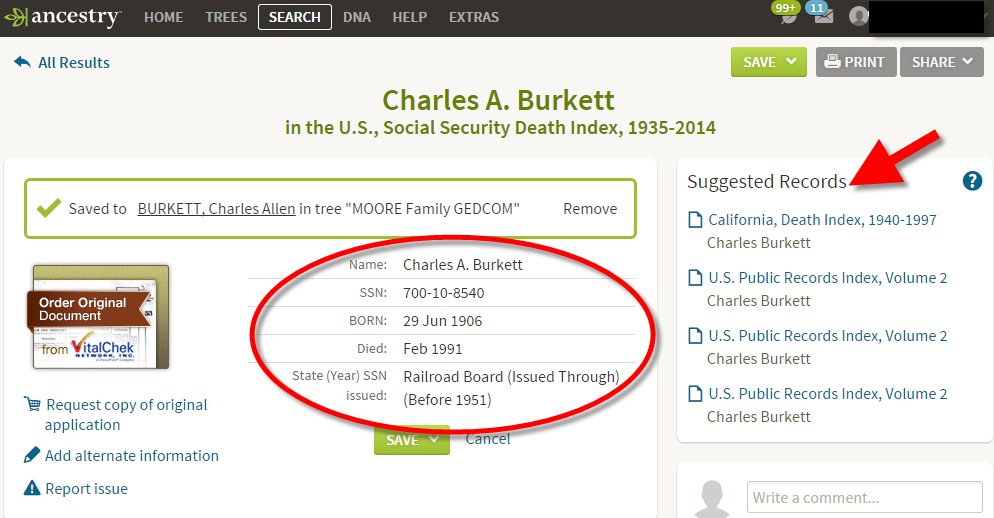 Try This Now! U.S. Social Security Applications and Claims Index
Try This Now! U.S. Social Security Applications and Claims Index
Search the SSDI for Your Family History
Genealogy Gems Podcast episode 21 about military record requests through FOIA


